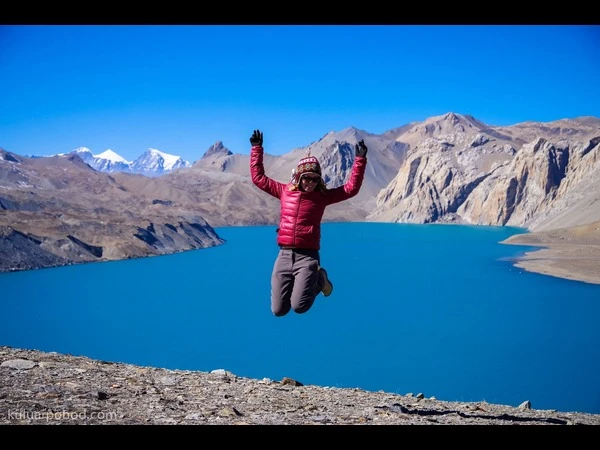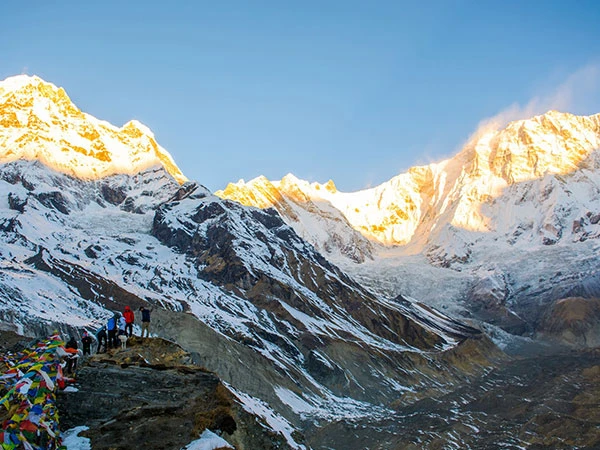Nar Phu Valley Trek highlights
- Explore the remote villages of Nar and Phu, which are tucked inside the Annapurna Conservation Area.
- Enjoy Kang La Pass (5,300 m) with the views of Annapurna II, Gangapurna, and Manaslu.
- You can extend to Thorong La Pass (5,416 m) and join the classic Annapurna Circuit route.
- Get a chance to see the panoramic views of Annapurna Massif, Tilicho Peak, Manaslu Range, and Chulu East & West.
- You can also add the days in your Nar Phu trek itinerary to trek to world’s highest lake, Tilicho Lake.
- Experience the authentic Tibetan Culture, ancient monasteries, chortens, and prayer flags.
- Combine Nar Phu Valley Trekking with the Annapurna Circuit, crossing the Kang La and Thorong La Passes.
- Perfect for the trekkers who are searching the peaceful, and less crowded alternative to Everest Base Camp and Annapurna Circuit.
- Get a chance to visit Manang and Muktinath in the same trek.
Overview of Nar Phu Valley Trek
If you’re dreaming of stepping into the hidden Himalayan world, then NarPhu Village can be your perfect adventure. It is an untouched area of Nepal, which is tucked silently in the Manang district inside the Annapurna Conservation Area.Nar and Phu are the two villages separated by mountains and valleys. Nar village is situated at about ~4,110m and Phuvillage at ~3,700m.
Narphu Valley is surrounded by the stunning peaks like Manaslu,Annapurna II,Gangapurna, and Chulu East. This valley lies in a restricted area of Nepal, and it has been open for foreigners only since 2023. So, trekkers will need special permits to trek here.
Nar Phu region is home to the Tibetan Buddhist Communities. People here are warm-hearted and still live in traditional mud-and-stone houses. Local people survive their lives doing yak herding, barley farming, and animal husbandry. The culture of this region has been preserved for centuries due to its remoteness.
Kang La (5,200m) and Thorong La (5,416m) are the highest points of the Nar Phu Valley Trek. While returning, you’ll experience the picturesque Manang Village with its rich Tibetan culture. After leaving Manang, you’ll get a chance to visit the Sacred Muktinath Temple, which is an important pilgrimage site for both Hindus and Buddhists. Everything in just one trek, which you’ll definitely enjoy.
Himalayan Partner offers you to trek to Nar Phu Valley with us for the best experience. For more information and inquiries regarding Nar Phu Valley, feel free to contact us.
Narphu Valley Trekking Route
Journey to Narphu Valley Trek begins with a drive from Kathmandu to Dharapani. Then the trek starts from Koto, gradually ascending through Meta, Kyang, Phu Village, and to Nar Village. You’ll be exploring Nar Phu villages with short hikes near the village and cultural immersion around Nar and Phu.
If you plan to do the Nar Phu Valley Trek through the Kang La Passroute, then you’ll trek through Nar and ascend to Kang La Pass (~5,300m), then to Ngawal, and then Manang and rejoin the route of the Annapurna Circuit.
If you have more days and want to explore Tilicho Lake then you can also add Tilicho Lake in your trek which adds one or 2 days in your itinerary. Also you can also skip both Kang La and Thorong La Pass if you have less time and want to finish the trek in less days.
In this package, we will mainly discuss the most popular trekking route to Nar Phu Valley which is through Kang La and Thorong La Pass(Annapurna Circuit).
Why is this Narphu Valley Trek with Kang La and Thorong La Special?
The Narphu Valley Trek with Kang La and Thorong La Pass is a special trek that brings remote areas, high altitude passes, and deep culture everything in a single journey. Here’s some reason why this trek is special:
- Hidden Tibetan Villages: You’ll explore the untouched Nar and Phu Villages. Meet locals, witness Tibetan Buddhist culture and visit ancient monasteries.
- Two high-pass adventure: Conquer two high Himalayan passes in one Trek. Kang La Pass at 5,300m and Thorong La Pass (5,416 m).
- All-in-one Experience: In a single itinerary you’ll explore remote villages, walk in the route of Annapurna Circuit and visit the Nepal’s two most iconic places: Manang and Mustang.
- Panoramic Himalayan Scenery: Best views of Annapurna Massif, Tilicho Peak, Chulu Range, and Manaslu Himal is seen. Also you can do the optional trek to Tilicho Lake.
- Peaceful Trails: Experience the quiet trails with few trekkers unlike Everest and Annapurna route. Best for the people who are in search of peace.
This Nar Phu trek with Kang La and Thorong La is special because it is everything from Tibet valleys, high passes, the worlds famous Annapurna Circuit, and Nepal’s sacred places, all in one journey. This is the reason why people love this trek.


.webp)
